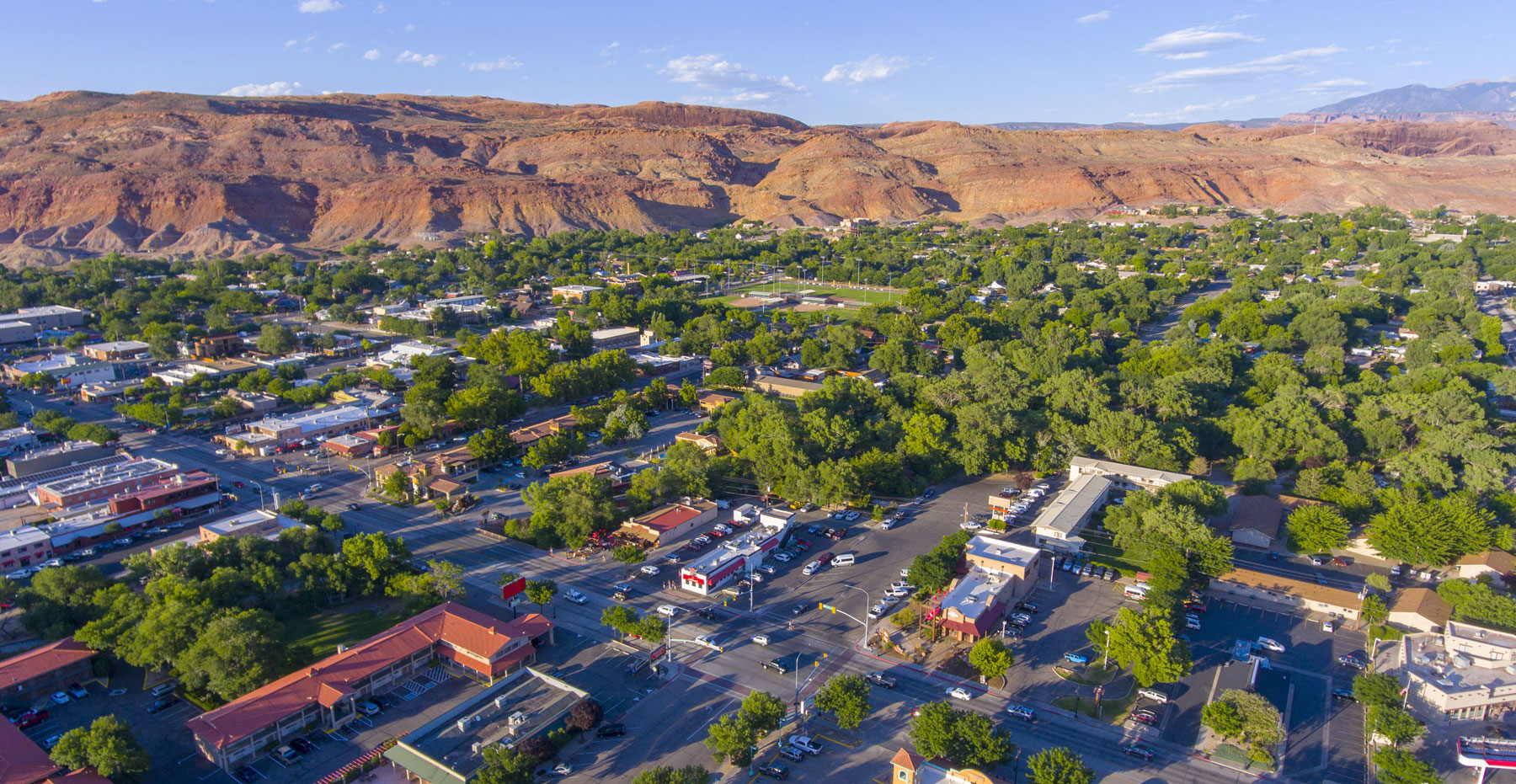What are Regional Energy Markets?
How we power our homes and businesses is changing rapidly. Driven by increased demand for cleaner energy and the rapidly declining cost of renewable energy, the electricity sector is undergoing a rapid transition away from the conventional fossil fuel-based resources of the past. Regional energy markets are an essential tool to meet the challenges of the future by delivering clean, reliable, and affordable electricity to power our homes and businesses.
The larger geographic footprint of a regional energy market facilitates the reliable delivery of renewable energy. The sun is usually shining and the wind blowing somewhere in the West, even if not locally. A regional energy market matches these local power sources with demand from our homes and businesses, enabling participating utilities to take advantage of distant as well as local renewable energy.

How Can Regional Energy Markets Help Address Climate Change?
An expanded regional energy market in the West can incentivize the use of clean energy resources and assist with displacing fossil fuel generation that is increasingly uneconomic and unhealthy for the environment. A well-designed regional energy market also can enable conservation, through demand side management that shifts peak demand for power and incentivizes energy savings for commercial and industrial customers. The larger the regional energy market for electricity, the greater the benefits of decarbonized energy that powers our grid, enhances reliability, and fosters regional diversity of energy resources.
A Regional Energy Market Improves Efficiency, Lowers Costs, and Promotes Economic Growth
A regional energy market efficiently deploys the lowest-cost energy from across the region to meet the needs of an expanded geographic footprint, thereby lowering costs. And, through lower energy prices, a regional energy market can spur economic growth. Lower electricity prices translate into greater household income, and more income to spend can stimulate local economies. Furthermore, areas of the West that are rich in renewable resources receive the additional economic stimulus from the construction and maintenance of new renewable generation.
Our Current Electric Grid System Needs to be Modernized
The existing electric grid is outdated and unable to meet the challenges of the 21st century. The current electric grid impedes deployment of key technologies that could mitigate climate change and is vulnerable to the impacts of disasters. In addition, the grid performs poorly with respect to energy efficiency, wasting energy with voltages that are higher than necessary and restricting the variety of energy-efficient appliances that customers can choose. Utilities do not have sufficient capabilities to monitor their footprint and the larger grid, and there is currently little ability for corrections such as automatic rerouting of electricity when certain sectors of the grid fail.
This lack of grid resiliency impacts communities at a fundamental level, as demonstrated by days and even weeks of electric outages that risk lives and bring communities to a standstill. Recent events from the August 2020 heat-related blackouts in California and February 2021 winter-storm events in Texas have accentuated the need for a resilient grid that has access to diverse resources across a larger footprint of market for energy.
A Regional Energy Market Makes the Best Use of the West’s Transmission Grid
Currently, sellers of electricity in the West must enter into contracts to move power from one location to another over long distances. For example, a utility in Montana may have power to sell to a utility in San Diego. To move that power, the utility may contract with multiple transmission operators through Oregon and California. However, since electricity follows the laws of physics rather than the contract path, this electricity may actually flow south through Utah (rather than the contracted Oregon/California path), unexpectedly overloading and stressing that part of the grid. To protect against this type of overloading, the lines in Utah may routinely be operated well below their full capability.
By contrast, a regional energy market is operated by a grid operator using highly sophisticated software, monitors, and computers that allow it to see the way electricity actually flows. This allows the transmission system to be more fully utilized and reduces the need to build expensive new transmission. Making more efficient use of the existing grid not only saves money, it also avoids potential harm to recreation areas, habitat, endangered species, and iconic landscapes.

A Regional Energy Market Enhances Reliability, Reducing the Risk of Blackout
The transmission system in the West (also called the Western Interconnection) is one large integrated network. It includes British Columbia and Alberta, Canada; all or parts of 14 Western states in the United States; and the northern portion of Baja, Mexico. Due to its interconnected nature, a glitch in any part of this large grid can lead to service interruptions hundreds of miles away. A regional energy market would automate and significantly enhance the reliable delivery of power across the Western grid.
In the West today, 37 individual balancing authorities match power generation to the demand from homes and businesses within their local areas. Each has a relatively good understanding of its own operations, but the ability to view other balancing authorities’ transactions is limited. Traders buy and sell electricity in large blocks, and most trades are arranged in a bilateral fashion — by email or a direct call. When an event occurs that poses a threat to the larger grid, such as the loss of a large generator or transmission line, the entity with the legal responsibility through the North American Electric Reliability Corporation (NERC) to assure reliability in that local area must locate additional power and available transmission. This can be time consuming, and deteriorating conditions on an interconnected grid can cause blackouts that can spread to neighboring utilities’ systems.
A regional energy market for wholesale electricity can improve reliability. By using sophisticated software, monitors, and other equipment, the regional energy market’s grid operator can view generation levels, power flows, and resource availability across the entire expanded footprint. If a large unit or transmission line is lost, the system software swiftly and automatically redeploys available generation using available transmission, reducing the risk of blackouts. Strengthening the reliable operation of the electricity grid is good for consumers.
Regional Transmission Organizations Can Provide Enhanced Benefits for the West
A regional wholesale energy market matches generation resources to meet demand in the most cost-effective manner possible by dispatching the least-cost resources first and offers significant benefits in terms of economies of size and scale. A regional transmission organization (RTO) is one such framework that enables automated procurement and dispatch in real time to serve load using least-cost resources. The automation of energy transfers also incentivizes greater procurement of renewable resources. Utilities that do not participate in a regional energy market often have to curtail excess renewable production, whereas those in a regional energy market can seamlessly procure and integrate such near zero-cost energy resources to serve load regionally.
State legislatures across the West are beginning to recognize the benefits of utilities participating in regional energy markets. The 2019 Colorado Transmission Coordination Act ordered state agencies to investigate the potential advantages and disadvantages of joining a regional energy market. Similarly, in 2021, the Nevada state legislature passed SB 448 that directs NV Energy to join an RTO by 2030. This new law also includes a provision to establish a transmission coordination task force to investigate opportunities for regional transmission development.
WRA Plays a Critical Role in Securing Grid Improvements
WRA is working with utilities and regulators to develop open, public processes for creating electricity grid expansion plans and to incentivize investments in the grid. Working in Western states’ regulatory arenas in Arizona, Colorado, Nevada, New Mexico, and Utah, we seek meaningful improvements in the electricity transmission grid and its regulations in order to facilitate innovations necessary to address climate change. WRA is also engaged in the California Independent System Operator (CAISO) and other regional energy market expansion initiatives to advance a decarbonized Western grid that includes a Western market for wholesale energy and leveraging diverse clean energy resources.
WRA Engagement: Comments and Filings
- 2019.11.15 – WRA Comments 19M-0495E Colorado
- 2019.11.22 PIO Comments EDAM Issue Paper CAISO
- 2019.12.16 Joint PIO Reply Comments 19M-0495E Colorado
- 2020.09.12 PIO Comments EDAM-Bundle 1 CAISO
- 2020.10.22 PIO Comments SPP Revised WEIS Proposal FERC
- 2021.05.27 PIO Comments on CAISO Wheel Through Tariff Proposal FERC
- 2021.06.14 PIOs Comments on GRC Straw Proposal CAISO
- 2021.06.30 PIO Comments SPP RTO West Terms and Conditions
- SPP2021.07.16 Joint PIO Initial Comments 19M-0495E Colorado
- 23-00268-UT-2023.9.14 WRAs Initial Comments
- 2024.02.16 No. 23-10019 NV WRA Comments

